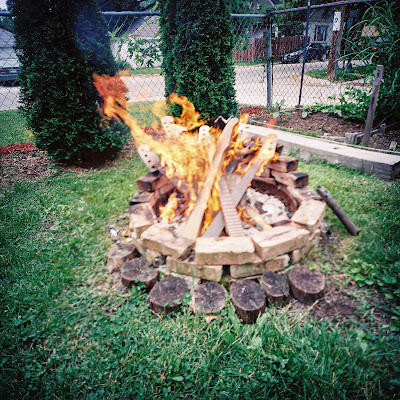Although the blog doesn’t reflect it, there’s been plenty going on these last 24 months. The blues band, Gatorwater has been gigging regularly and just recorded eight tunes in October. After a 20 year pause, the old college band—The Dynamo Theorem played its first show—I had to remember how to sing! I’ve been playing trumpet with regularity, building bikes, and of course my steadies—drawing and designing. Although it feels like I’ve slowed down with the bass building, that’s really not the case. I’ve worked on about a half-dozen bass guitars and even got my hands on an old Ampeg Baby Bass that needed a little love.
It’s safe to say some of the blog silence has been due to a bit of a tangent. Having spent so much time working on fretless acoustic bass guitars, I found myself rediscovering frets and solid bodies… and I liked it. The best place to begin this new journey in the ABG Manifesto is with a short-lived bass I called the Husky White Duke and my dive back into the 20-year-old Dynamo Theorem catalog.
TRIAL WITH FIRE
The Dynamo Theorem started in roughly 2000 as a post-indie-math-punk-instrumental band with vocals. I had been playing bass for about a year at that point in a pick-driven, trumpet-inspired style you might call lead bass.
The donor guitar for this nostalgic build was a mid-90s Fender PJ Special which had already undergone serious modifications as the Oakenshield. The first order of business was to strip the epoxy finish from the body and paint it white in memory of my first bass, which was a white Squier P-bass. The original pickguard resembled what was found on Fender’s original bass guitars, so that sent me down a historical road and I decided to make this bass look like a small ’51.
Like I mentioned earlier, this bass wasn’t around too long. The main reason for that was the difficulty I was having trying to sing while playing fretless. Secondly, I had just over-worked the body too many times and it had lost it’s spark. Thirdly, the neck. I picked up a, by all standards, cheap neck made by Allen Eden. It was a fretless, 32” scale neck, which they don’t appear to make any longer. My guess is for good reason. I recall it being exceptionally narrow at the string nut (almost like it was designed for 3 strings). It arrived a little banged up, but nothing a little sandpaper wouldn’t fix. I would probably still have the Duke around if I didn’t feel like I was getting jammed up in the lower register.
The Husky White Duke along with a number of other projects was laid to rest in a funeral pyre. While it’s always a touch sad to send a guitar off to that big guitar shop in the sky, it seems a necessary part of building. The Duke was an important build. It began teaching me the importance of details. A couple millimeters here and there can have huge effects on playability. It also made me think about becoming a more diversified bass player. For the previous ten years, I would simply shoehorn my fretless acoustic sound into everything and it was time to expand. It also served as a catalyst to take a closer look at the Precision Bass, which up until then just felt like the default. That’s where I’ll pick up next time.














Comments